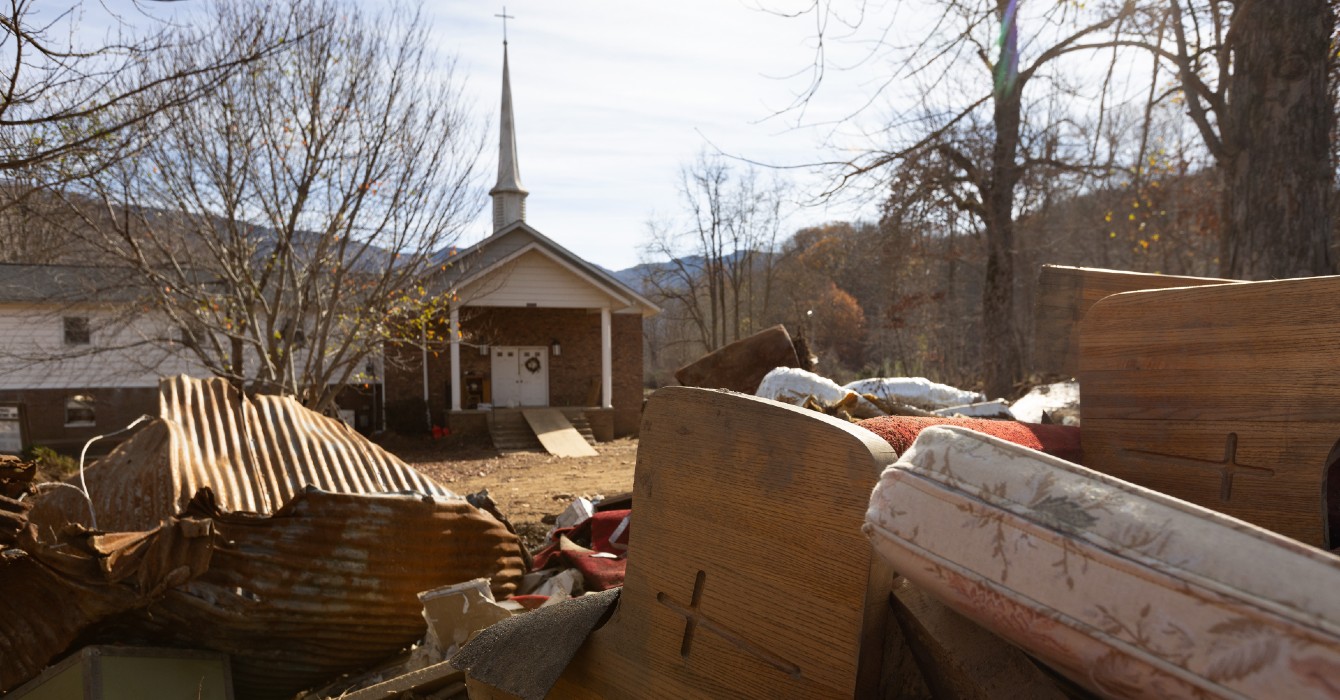Holy Monday was supposed to be a detail day.
We had worked hard during the previous months preparing Holy Week and Easter services and sermons. After more than a year of pandemic, we had planned a meaningful and safe Holy Week, with remote and in-person services, including some inside the sanctuary and some outdoors.
And so our staff team expected to spend Monday putting the finishing touches on everything and pushing the print button.
Instead, Holy Monday became a hot mess in a hurry.
Our plans began to fray as COVID-19 numbers increased rapidly here in Michigan. After months with low numbers of infections and a steady number of individuals receiving vaccinations, the pandemic went from smoldering to inferno.
While the pandemic ramped up in our state, it also ran roughshod over our plans when our worship director (also our primary organist) had to begin a 14-day quarantine. This left us without a key staff member and musician, days before a series of 10 Holy Week worship services.
Months of planning had to be shifted in a day. All we could do was leap into Holy Week and Easter and build a plan as we went.
We relied heavily on a COVID advisory team that we had assembled earlier in the pandemic. This team, composed of local medical professionals, educators and government employees, had already been very helpful in developing safe and appropriate ministry plans attuned with changing circumstances.
We’d been meeting in person since February at half capacity, with masks and distancing (and an online option). Our advisory team suggested that we drop that further, so we set the limit below half and created an overflow section.
Now that I’ve had a little time to reflect, I’ve identified three unconventional strategies that proved especially helpful for our team as we led our congregation through this messy situation.
Disappoint everyone. Counterintuitive as it sounds, we found that a good overall approach for returning to in-person church is to disappoint everyone. This is not an endorsement of poor planning, recklessness or insensitivity. Rather, it’s a wise recognition that every decision is going to disappoint people in some way.
Some people will think that your plans for returning to in-person events are too slow and cautious; others will consider those same plans too swift and reckless. Unfortunately, the best path forward is often between the two extremes -- where both sides are disappointed.
Leaders often assume that a lack of complaints is a good sign. However, that’s not always the case. It is said that effective leadership is disappointing people at a rate at which they can tolerate or absorb; this is especially important when lives are at stake.
If your plans for the timeline of return, frequency of services, number of people allowed and precautions in place leave everyone slightly disappointed, then you may be on the right track.
Control everything. If anything, this pandemic has demonstrated how little control we have. Our team had no control over rising COVID-19 numbers, nor could we control the timing of our worship director’s quarantine.
Nevertheless, in situations that are largely out of our control, it is helpful to ask, “What can we control?” We often have more control over situations than we initially think.
When our Holy Week began with a team member starting a quarantine, we immediately sought ways that we could control the situation as it unfolded. Although our staff was already following the recommended procedures for preventing the spread of COVID-19, we came up with additional measures.
For example, we had all staff conduct meetings during Holy Week via video conferencing or phone to minimize the possibility of other staff members becoming infected or having to quarantine.
Additionally, we came up with a backup plan for what to do if one of the preachers could not attend services in person.
Did we really control everything? No. But we did as much as we could. And this gave us confidence that our plans were not totally out of our control.
As you formulate plans to return to in-person worship, consider the following: What can you control in this? What is outside your control but could be anticipated with a contingency plan?
Wait until the last minute. This is not a suggestion to be haphazard, slapdash or idle in planning. Rather, it’s an encouragement to wait as long as possible, after diligently making plans, to enact them.
The pandemic has proved that a lot can happen in the course of a few days. The situation in Michigan is changing practically by the minute right now.
The key is determining how long you can wait to decide or communicate something to your congregation without waiting too long.
For example, we thought that the governor might make an announcement during Holy Week. Not knowing what this announcement might entail -- but knowing it might include new restrictions -- we considered what plans might be affected if this were to happen.
Would we have to move all services online? Would we have to limit even further the number of people attending in person?
Once we had considered these possibilities and how we might adjust accordingly, we decided what would be the latest date that we could communicate our plans without any negative consequences.
While Holy Monday was a hot mess, the rest of Holy Week turned out to be a wonderful experience for our congregation. We were able to joyfully -- and safely -- proclaim, “Christ is risen!” And, adding to our thanksgiving, our worship director completed quarantine without a positive COVID test.
It took some unconventional, even contrarian thinking. But the strategies we adopted can continue to bring some much-needed stability amid the chaos of returning to in-person church.














